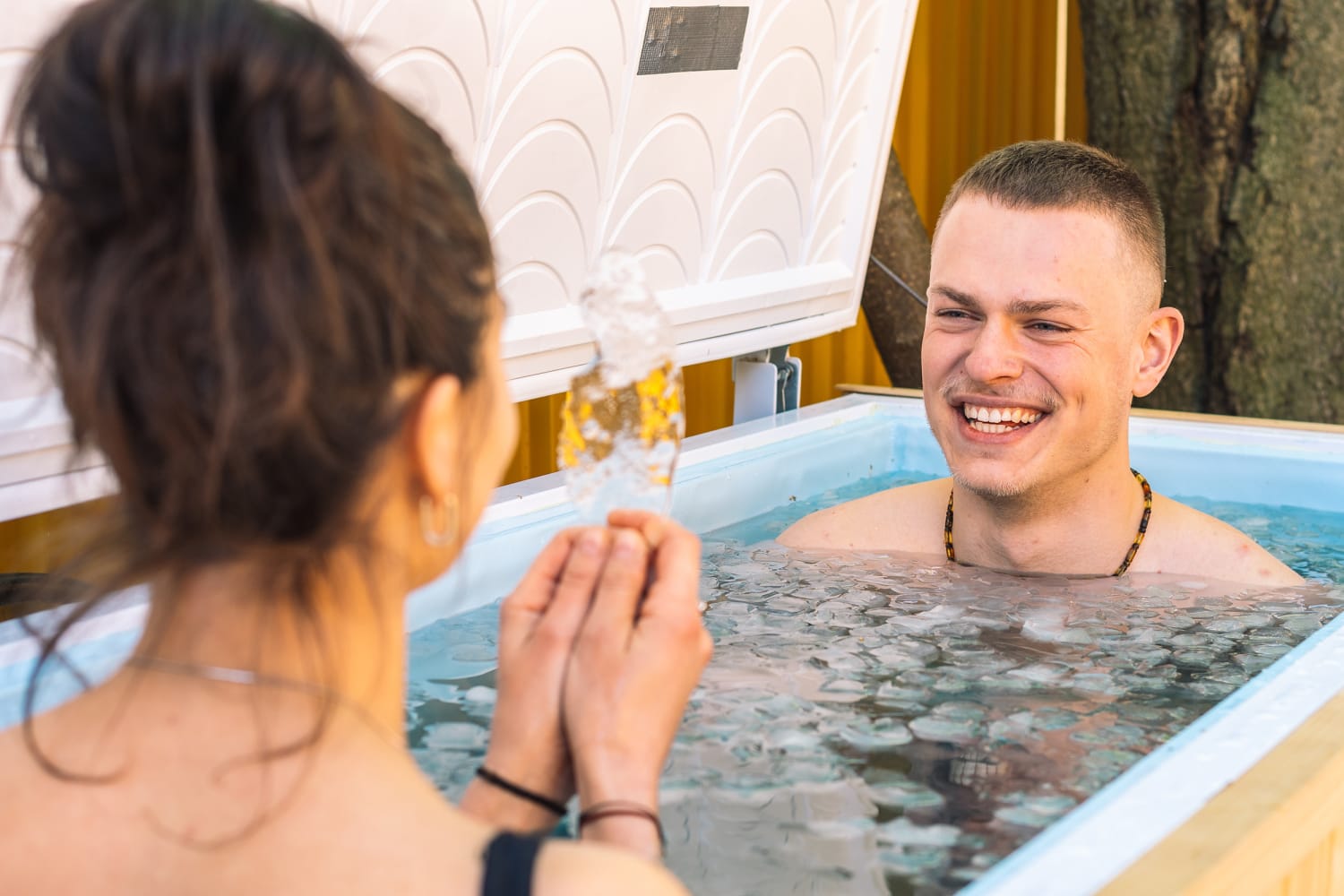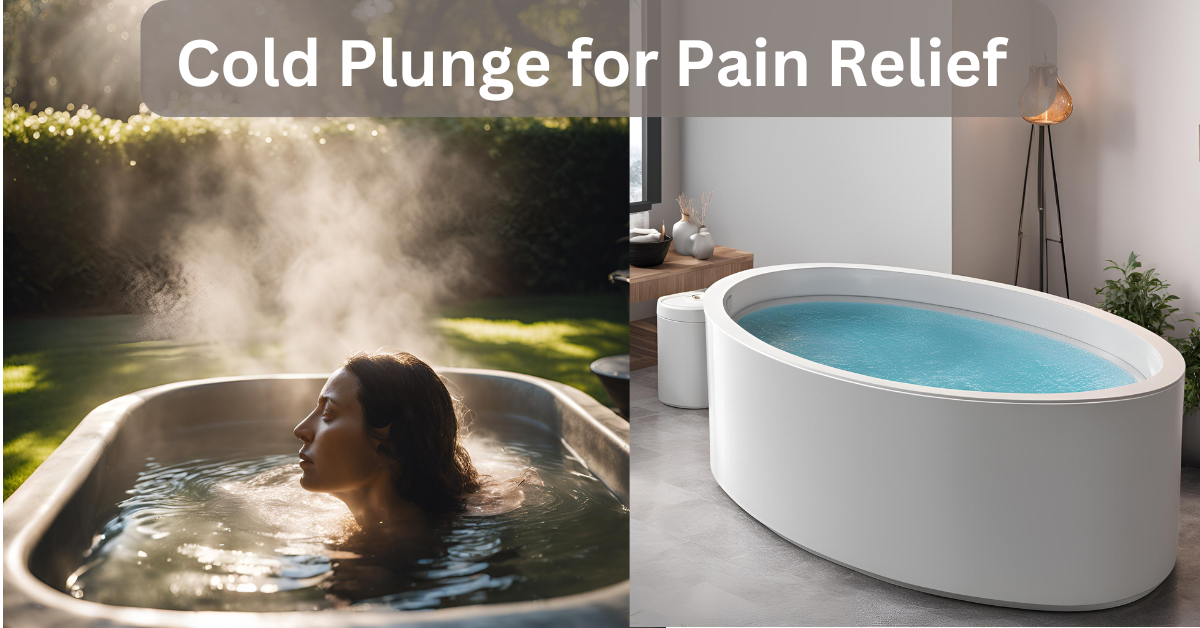In today’s fast-paced world, many individuals are seeking natural methods for pain relief, moving away from pharmaceutical solutions. One such method that has gained significant attention is cold plunging. This age-old practice offers various benefits, particularly for pain management and relief. In this article, we will explore how cold plunging can serve as an effective tool for alleviating pain and improving overall well-being.
Understanding Pain and Its Mechanisms
1. Types of Pain
Pain can be categorized into two primary types:
- Acute Pain: This type of pain is sudden and typically linked to an injury or medical condition, such as a sprained ankle or surgery. Acute pain usually subsides once the underlying issue is resolved.
- Chronic Pain: Chronic pain persists for extended periods, often lasting longer than three months. Conditions like arthritis, fibromyalgia, and chronic back pain are examples of chronic pain. This type can significantly affect quality of life.
2. The Body’s Response to Pain
When the body experiences pain, it activates the pain pathway, which involves:
- Nociceptors: Specialized nerve endings that detect harmful stimuli.
- Pain Signal Transmission: Nociceptors send pain signals to the spinal cord and brain, where the perception of pain occurs.
- Inflammatory Response: The body releases chemicals like prostaglandins and cytokines to address injury, often leading to inflammation and swelling, which can exacerbate pain.
Understanding this response is crucial in identifying effective pain management techniques, including the benefits of cold plunging.

The Role of Cold Plunge in Pain Relief
1. How Cold Exposure Affects Pain
Cold exposure, including cold plunging, can offer significant relief from pain through various mechanisms:
- Vasoconstriction: Cold temperatures cause blood vessels to constrict, reducing blood flow to the affected area. This can help minimize swelling and inflammation, crucial for acute injuries.
- Numbing Effect: Cold immersion has a natural analgesic effect, temporarily numbing nerve endings in the skin. This can lead to reduced pain perception.
- Endorphin Release: Cold exposure triggers the release of endorphins, the body’s natural painkillers. This can lead to improved mood and pain relief.
2. Research Supporting Cold Therapy
Several studies have highlighted the effectiveness of cold therapy in pain management:
- A study published in the Journal of Athletic Training found that cold water immersion significantly reduced muscle soreness after intense exercise, showcasing its potential benefits for athletes and active individuals.
- Another research article in Sports Medicine indicated that cold exposure could decrease inflammation and accelerate recovery from injuries, supporting its use in both acute and chronic pain management.
For more information on cold therapy studies, check out PubMed.
Benefits of Cold Plunging for Pain Relief
1. Reducing Inflammation and Swelling
Cold plunging is particularly effective for reducing inflammation and swelling associated with injuries and conditions such as:
- Sprains and strains
- Tendonitis
- Post-surgical pain
- Arthritis flare-ups
2. Alleviating Muscle Soreness
Athletes and fitness enthusiasts often turn to cold plunging for relief from muscle soreness and fatigue after workouts:
- Delayed Onset Muscle Soreness (DOMS): Cold exposure can help minimize DOMS, allowing for quicker recovery and return to training.
- Enhanced Recovery: Regular cold plunging sessions can promote faster recovery times, allowing athletes to perform at their best.
3. Managing Chronic Pain Conditions
Individuals with chronic pain conditions can also benefit from cold plunging:
- Fibromyalgia: Cold exposure may help reduce pain levels and improve overall function in individuals with fibromyalgia.
- Arthritis: For arthritis sufferers, cold plunging can help alleviate joint pain and stiffness, enhancing mobility.

How to Safely Incorporate Cold Plunging
1. Start Slowly
For beginners, it’s essential to ease into cold plunging:
- Duration: Start with 1-2 minutes and gradually increase to 5-10 minutes as your body adapts.
- Temperature: Aim for water temperatures between 50°F and 60°F (10°C to 15°C) for effective results without overwhelming discomfort.
2. Establish a Routine
Consistency is key to experiencing the full benefits of cold plunging:
- Frequency: Aim for 2-3 sessions per week to effectively manage pain and inflammation.
- Timing: Consider incorporating cold plunging after workouts or during flare-ups of pain for optimal relief.
3. Use Precautions
While cold plunging can be highly beneficial, it’s crucial to follow safety precautions:
- Consult a Professional: If you have any medical conditions, particularly cardiovascular issues, consult a healthcare professional before beginning cold plunging.
- Listen to Your Body: Pay attention to how your body responds to cold exposure. If you experience excessive discomfort, adjust the duration and temperature.
FAQs
While cold plunging can be beneficial for many individuals, those with specific health concerns (e.g., cardiovascular conditions, Raynaud’s disease) should consult a healthcare provider before starting. Always listen to your body and modify as necessary.
Many individuals report immediate relief after cold plunging. However, the duration and consistency of sessions can impact long-term results, especially for chronic pain conditions.
Yes! Cold plunging can be effectively combined with other pain relief methods such as physical therapy, massage, and stretching exercises for comprehensive pain management.
After a cold plunge, it’s essential to warm your body gradually. Wrap yourself in a warm towel or blanket, and consider doing light stretches to promote circulation.

Conclusion
Cold plunging is a powerful and natural method for managing pain, offering numerous benefits for both acute and chronic conditions. By reducing inflammation, alleviating muscle soreness, and enhancing recovery, cold immersion provides a holistic approach to pain management.
As you incorporate cold plunging into your wellness routine, remember to start slowly, stay consistent, and listen to your body. With time, you may find that cold plunging significantly enhances your ability to manage pain effectively and improve your quality of life.
For additional resources on pain management and alternative therapies, visit American Chronic Pain Association for valuable information and support.
Are you ready to take the plunge? Embrace the healing power of cold immersion and experience the transformative benefits for your pain relief journey!





